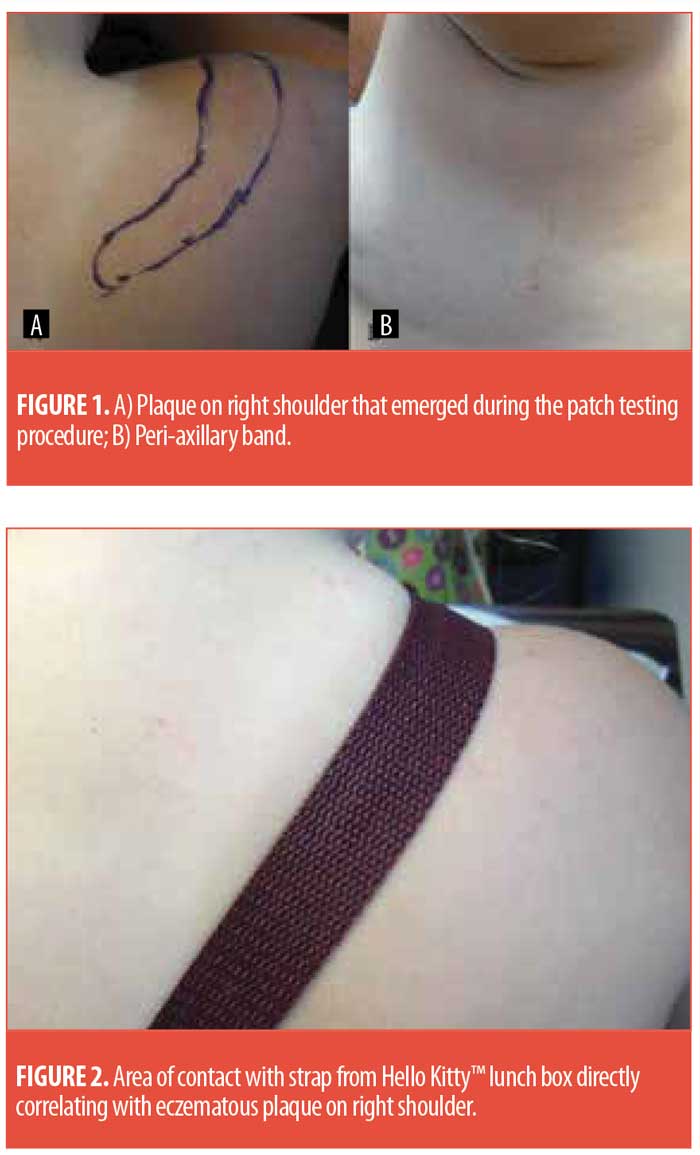by Sharon E. Jacob, MD and Shehla Admani, MD
Dr. Jacob is a Professor of Dermatology in the Dermatology Department at Loma Linda University, in Loma Linda, California. Dr. Admani is a Clinical Assistant Professor of Dermatology at Stanford University School of Medicine in Stanford, California.
Dear Editor:
 Disperse dyes are the most common dye sensitizers and are used to color synthetic fibers, such as polyester, acetate, and nylon. It is not always easy to predict a textile dye allergy as the dermatitis in these patients can show uncommon clinical features, atypical localization, and unusual clinical patterns.1
Disperse dyes are the most common dye sensitizers and are used to color synthetic fibers, such as polyester, acetate, and nylon. It is not always easy to predict a textile dye allergy as the dermatitis in these patients can show uncommon clinical features, atypical localization, and unusual clinical patterns.1
We evaluated a six-year-old girl with a nine-month history of a diffuse pruritic dermatitis, with an onset that her mother correlates with the timing of the start of the school year. Patch testing to the Thin-Layer Rapid Use Epicutaneous Patch Test (T.R.U.E.)™ (Smart Practice; Phoenix, Arizona) showed a 1+ reaction to disperse blue dyes. Interestingly, during the course of the testing, the patient developed ectopic flare reactions, specifically a well-demarcated eczematous plaque on her right shoulder and clearly defined peri-axillary eczematous “bands” (Figure 1). When the patient presented for avoidance counseling, she was noted to be carrying a Hello Kitty™ lunch box with a polyester brown strap that rested on her shoulder in the same distribution as the ectopic flare (Figure 2). In addition to her lunch box, the patient had also started wearing several new outfits for back-to-school, many of which were composed of polyester.
In a dermatitis that is associated with the start of the school year, a clinician should consider disperse dyes found in fabric lunch pails, back packs, and new clothing such as school uniforms.
Reference
- Malinauskiene L, Bruze M, Ryberg K, Zimerson E, Isaksson M. Contact allergy from disperse dyes in textiles: a review. Contact Dermatitis. 2013 Feb;68(2):65-75.

